Do you have a question about the Toyotomi TKN/TKG-A528DV and is the answer not in the manual?
| Type | Split System |
|---|---|
| Energy Efficiency Ratio (EER) | 3.21 |
| Power Supply | 220-240V, 50Hz |
| Refrigerant | R410A |
| COP (Heating) | 3.6 |
| Noise Level (Outdoor) | 55 dB(A) |
Instructions to prevent injury and property damage, classifying seriousness by indications.
Emphasizes contacting authorized service for repair, maintenance, and installation.
Advises on supervision for children and proper power cable replacement by authorized service.
Covers proper power connection, earthing, circuit breakers, and safe disconnection procedures.
Details safe operation, handling of cords, water, plugs, and avoiding unauthorized disassembly.
Includes precautions for ventilation, cleaning, storms, unplugging, extended non-use, and filter installation.
Covers safe filter removal, cleaning, placement of obstacles, and handling of drain water.
Identifies and illustrates the various parts of the indoor and outdoor units of the air conditioner.
Details the meaning of symbols and codes shown on the unit's display window.
Explains additional codes and indicators displayed on the unit's screen during operation.
Specifies temperature ranges for cooling, heating, and drying, with operational notes.
Details how to perform manual operation when the remote control is unavailable or for maintenance.
Explains how to activate AUTO and forced COOL modes using the unit's control switch.
Guidelines for adjusting airflow direction to ensure comfort and even room temperature.
Instructions for adjusting horizontal louvers via remote and vertical louvers manually.
How to set vertical airflow direction using the remote controller for precise control.
Manual adjustment of vertical louvers for horizontal airflow, with power disconnection warning.
Warnings about downward airflow, manual louver movement, and potential louver movement delays.
Unit automatically selects cooling, heating, or fan mode based on room conditions.
Manages temperature overnight for comfort and energy saving, adjusting by 1°C per hour.
How the unit dehumidifies by cycling cooling or fan, using low fan speed.
Explains heat-pump operation and reduced efficiency in cold temperatures, suggesting auxiliary heat.
Guidance on adjusting airflow, temperature, and closing openings for best results.
Alerts users to refrigerant leaks by displaying an "EC" code on the indoor unit.
Remembers and restores the last set horizontal louver angle for user convenience.
Automatically dries the indoor heat exchanger to prevent bacterial growth and odors.
Utilizes a Plasma Dust Collector to improve indoor air quality by ionizing and capturing particles.
Dries the evaporator with soft wind after operation to prevent mildew growth.
Automatically resumes the previous operation mode after a power interruption.
Enables control of the air conditioner via remote or mobile telephone using a Wi-Fi module.
Notifies users to clean ("CL") or replace ("nF") air filters based on operating hours.
Turns off the indoor display and buzzer for a quieter, more comfortable environment.
Instructions for cleaning the unit's casing and remote controller using a soft, dry cloth.
Specific warnings against using certain cleaning agents or hot water on the unit.
Guidance on cleaning air filters every two weeks to maintain cooling efficiency.
Instructions for cleaning the Plasma filter, with a caution about touching it after operation.
Steps to take before long periods of inactivity, including cleaning and power disconnection.
Essential checks before resuming operation after a period of inactivity.
Warnings about touching internal parts, using water, and cleaning filters with hot water.
Explains compressor delay, no cold air in heat mode, and fan behavior during defrosting.
Details how the unit defrosts the outdoor unit to maintain heating efficiency in cold conditions.
Addresses common occurrences like white mist and low operational noises.
Covers modes like FAN-only operation, dripping water, heating performance, and auto-restart.
Notes that external devices like lighting or phones can cause unit malfunction.
Instructions to stop the unit, disconnect power, and contact customer service for critical faults.
Lists common problems like flashing indicators, power issues, and remote control failures with their causes.
Addresses issues like incorrect settings, blocked filters, open doors, or compressor protection.
Explains how to handle persistent flashing indicators and error codes, advising professional service.
Specifies operating distance, signal obstruction, and environmental cautions for the remote.
Step-by-step guide for replacing batteries, including reprogramming notes.
Advises on mixing battery types, long-term storage, and proper disposal of batteries.
Lists model, voltage, receiving range, and operating environment for the remote controller.
Explains the ON/OFF, MODE, SWING, DIRECT, and SLEEP/PLASMA buttons for basic operation.
Details buttons for TURBO/SELF CLEAN, RESET, UP/DOWN, E/S, and FAN SPEED adjustments.
Describes the TIMER ON, TIMER OFF, L/O, FOLLOW ME, and LOCK buttons for advanced control.
Details all icons and display areas on the remote's LCD screen.
Explains fan speed display and indicators for LOCK, FOLLOW ME, and SLEEP modes.
Steps and notes for using the AUTO mode, including its automatic temperature and fan control.
Instructions for operating the unit in COOL, HEAT, and FAN modes with temperature and fan speed settings.
Steps for using the DRY mode, noting that fan speed is automatically controlled.
How to use the SWING and DIRECT buttons to control airflow direction.
Procedures for programming the unit to turn on or off automatically at specified times.
Demonstrates how to set the TIMER ON and TIMER OFF features with specific examples.
Explains how to set sequential TIMER OFF then TIMER ON, or TIMER ON then TIMER OFF operations.
Details the SLEEP mode for comfort and the PLASMA function for air purification.
Explains L/O for quiet operation and FOLLOW ME for remote temperature sensing.
Describes TURBO for rapid cooling/heating and SELF CLEAN for evaporator maintenance.
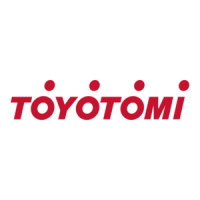
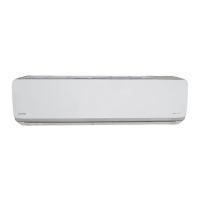


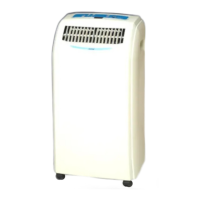
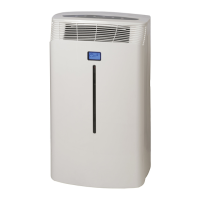
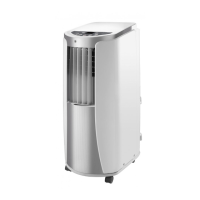
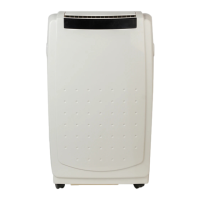
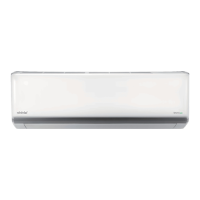

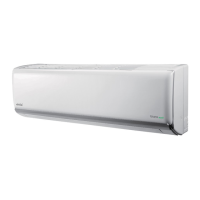

